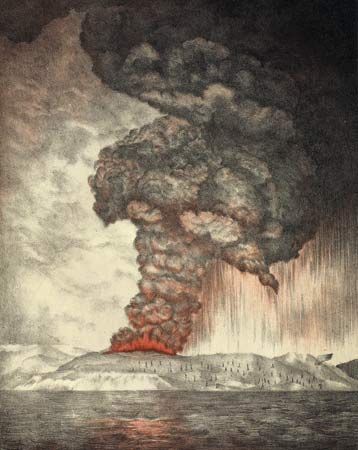Our editors will review what you’ve submitted and determine whether to revise the article.
News •
Rapid economic development was accompanied by territorial expansion. Although the Dutch had established their control effectively over Java by the mid-18th century and had gradually expanded their original holdings in Sumatra over the course of the 19th, their control over the rest of the archipelago was patchy and incomplete. It was exercised, in the main, through agreements with local rulers rather than through direct control over territory. In the closing years of the 19th century and the early years of the 20th, rapid moves were made to round out the Dutch empire and extend it effectively over the whole of the East Indies.
In northern Sumatra, warfare with the people of Aceh that lasted with varying degrees of intensity from 1873 to 1908 brought the northern tip of Sumatra under Dutch control. In Celebes and the Moluccas, where the Dutch had long exercised a general authority, a new instrument—the Short Declaration (in contrast to the earlier Long Contract)—bound local rulers to accept the control of Batavia. Dutch authority was extended in this way over Bone and Luwu in the Celebes, over central Borneo, over Bali and the Lesser Sunda Islands, and over Ternate, Ceram, and Buru in the Moluccas. Footholds were established also over parts of western New Guinea. Communications were developed—roads and railways in Java and Sumatra and expanded shipping services to link Java to the outer islands—to serve the needs of the new plantation economy. Between 1870 and 1910 the Dutch had thus effectively completed the process of converting the East Indies into a unified colonial dependency and, indeed, of laying the foundations of the future Indonesian republic.
The “new imperialism” of the late 19th century may be seen as part of a worldwide movement whereby the industrial countries of western Europe partitioned among themselves the hitherto undeveloped areas of the globe. In Africa, in the South Pacific, and in Burma (Myanmar), Indochina, and Malaya, as well as in Indonesia, a new “forward movement” was taking place that stood in dramatic contrast to the earlier patterns of commercial empire. If the European presence created a veritable watershed in Indonesian history, it is to be discerned about 1870 (as opposed to 1511, which marked the establishment of a European base in the archipelago).
The social impact of these developments upon Indonesian society was tremendous. The economic and political expansion brought a new Dutch population to the East Indies: civil servants to staff the growing services of government, managers to run the new estates, and clerks to staff the import-export houses and other businesses. These new Dutch communities came to form European enclaves within the major cities, and their presence underscored the social divisions in what was increasingly a caste society divided along racial lines. The Dutch, however, were not merely a community of expatriates who were eager to retire as soon as possible to The Netherlands. Many of them regarded the East Indies as their home. Their sense of belonging was very different, for example, from that of the British in India, and it was to give an added bitterness to the later struggle to retain the colony after World War II.
From the Indonesian point of view, the growing cities became the home of a new urban way of life and stimulated social change. A new elite emerged under the influence of the expanding Western impact. So did a new class of unskilled and semiskilled workers who found employment as domestic servants or as labourers in the light industries that began to develop. Rural society, though more sheltered, was also altered by the currents of change. Although agrarian law and the later labour legislation had provisions to protect existing customary rights over land and to guarantee fairness of contracts for labourers, the mere fact of contract employment on the estates affected the village society from which workers were drawn and played its part in hastening the growth of a disoriented population, divorced increasingly from the shelter of traditional village society but not absorbed into the new urban culture.






















